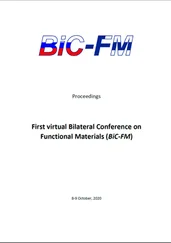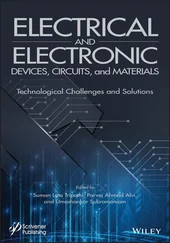Whilst on the subject of irrigation, it is often said that a solution is applied specifically to remove the smear layer resulting from instrumentation. That smear layer must, of course, be composed of the same proportions of matrix and mineral as the underlying tissue. It follows that no single solution can achieve such removal: mineral can be dissolved, and matrix oxidized, but not by the same agent. Likewise, there can be no selectivity on the part of the agents: chemically, smeared material is essentially indistinguishable from its source. Diffusion ensures that an acid or chelator, say, will reach underlying material in due course (and, of course, reach more remote areas than the canal being treated via accessory canals and so on). Very often, one sees references to so‐called ‘appropriate concentrations’, which supposedly avoid overextended reaction, without recognizing that both time and concentration – to say nothing of temperature – affect rate, whilst the extent of dissolution depends on the relative amounts of smeared material and reactant (volume × concentration), assuming that factors such as flow and streaming are not involved. Even then, one cannot assume uniformity of thickness or of any of the relevant factors over the entire space, most especially because it is tapered. Always, there is a compromise – in particular because the extent of the smeared material is unknown and progress cannot be monitored. Protocols based on the mean behaviour of a laboratory series cannot inform on the status of the individual case – an example of the fallacy of averages: sample means convey no information on distribution and thus on behaviour in the tails [11].
Following irrigation, it is necessary to dry the canal. This makes sense in that free liquid as such could interfere (mechanically) with subsequent processes, or even chemically via dilution or dissolution. However, it is wrong to imagine that water (as a substance) can be removed and then excluded from tooth tissue: desiccation is neither achievable not desirable. Dentine matrix, being proteinaceous, is hydrated. Removal of that water would be detrimental to its structure and properties. However, all tooth tissues are permeable, both grossly through patent canals and tubules and diffusively through soft and hard tissues, including enamel and cementum, and the vast majority of materials (solid ceramics and metals excluded). Water is therefore always available, everywhere, always. What matters, chemically, is its activity, not its concentration. That is, the equilibrium condition to be expected is that the activity of the water in all diffusively contiguous regions – that means everywhere in the mouth and surrounding structures – is the same. This is a thermodynamic condition that cannot be gainsaid. ‘Humidity’ is therefore 100%, always (although this really is not the proper term, except in a void, where it refers to the relative saturation of the vapour – ‘wet’ is preferable). How long it takes is a separate matter: diffusivity depends on the medium (we assume close enough to constant temperature). Even so, approach to equilibrium can be expected within a couple of weeks at most in the majority of materials and relevant circumstances [12, 13]. Any reactions that are possible (including absorption, and thus swelling) are therefore necessarily going to occur, but the extent in a given timeframe – the rate – depends on the availability of the water: gradients, diffusivity, and reaction kinetics. Avoidance of ‘leakage’, meaning actual liquid flow or diffusion through liquid pathways, may properly be the goal, but exclusion of water as a reactive substance is not possible.
In the context of leakage, there is clearly much interest in how well a material may be attached to tooth tissue. Commonly, this is referred to in terms of ‘bond strength’, yet it is acknowledged that for many materials this is ordinarily attributable only to a mechanical key – the result of the interlocking of the cast asperities of the material on those of the substrate [14]. It would seem preferable in such cases simply to refer to ‘retention’, as then it is accepted that there is nothing else going on. This thought raises an interesting point: on what is actual bond strength measured? Most systems of interest in dentistry involve a carefully prepared rough surface, whether through instrumentation, grit‐blasting, or etching, seemingly acknowledging that this is the main source of interaction. Would it not be sensible to test the adhesive qualities of materials using a smoothly polished, unetched substrate? That way, the true bond strength could be ascertained; that is, the benefit of any chemical interactions could be measured directly, instead of being confounded by the mechanical key. Proper efforts could then be directed to improving the chemistry, even if the key was to be used to augment the retention in normal service.
In passing, we may note that there is no such thing as a meaningful shear test in dentistry, as has been shown several times. Its continued use – in numerous highly idiosyncratic and ill‐controlled forms – is both pointless and bemusing: the results are uninterpretable, and certainly of no clinical relevance. Whilst that leaves axial tension as the only viable method, no material in any dental context is known to fail in that mode either: the service interpretability of all such results is problematic, therefore. A related problem occurs with ‘push‐out’ tests. The assumed interfacial shear is confounded by parasitic stresses and distortions that vitiate intent and thus interpretation. The absence of appreciation of the mechanics of such systems is disappointing.
A distinction also needs to be drawn between adhesion and seal. The latter can arise from a coating that has no specific bonding beyond the van der Waals ( i.e. simple wetting) or from a material that expands (for whatever reason) and is sufficiently plastic to conform to the surface. It might help to ponder the way in which an O‐ring seal works: a purely elastic system that has no bond requirement of any kind. Quality of ‘seal’ is plainly not related to ‘bond strength’ in any fundamental fashion, although in a dental context its continued existence might be. There are evident dangers in expanding materials in what are unavoidably weakened roots, but thought must be given to what scale of gap might be considered appropriate: does it matter at the molecular scale, say of water (the answer has to be no, since this is probably unavoidable), or is it just that of bacteria that is required? Perhaps somewhere in between is acceptable. This needs thinking through.
Lack of thinking is also evident in the use of methods taken from dental International Standards (ISO) documents, showing both a misapprehension of their purpose and unfamiliarity with the subtleties – indeed, outright difficulties – of testing, especially for mechanical properties, which is an exacting field [15]. Such ‘standardized’ methods are to be understood as economically sensible means of ascertaining safety and efficacy; as quality‐control (QC) methods. To call them quick and dirty is perhaps going too far, but they cannot necessarily represent the last word for scientific studies, because the manufacturer, for example, would not be prepared to pay for such accreditation testing, and they make their views known in the drafting committees and national bodies. It is essential to give a full appraisal of a proposed method, refining and elaborating it as necessary, to avoid pitfalls and increase the value of the results in terms of clinical relevance and interpretability. The fact that there are no universally recognized methods of unimpeachable protocol speaks of the difficulties of doing a good job, but also imposes severe requirements on those doing any testing. That severity is rarely even acknowledged, let alone honoured. Crude methods are taken from the literature simply because they have been used before (sometimes for many years), and that precedent is the only defence – there is no science. But on top of that, modifications are made without justification, seemingly for convenience. Comparability between papers evaporates.
Читать дальше












